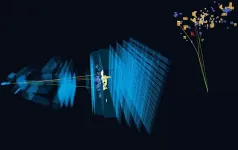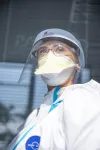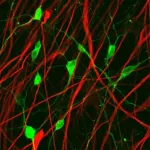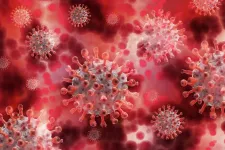INFORMATION:
This research is led by Professor Aydogan Ozcan, an associate director of the UCLA California NanoSystems Institute (CNSI) and the Volgenau Chair for Engineering Innovation at the electrical and computer engineering department at UCLA. The other authors include graduate students Luzhe Huang, Hanlong Chen, Yilin Luo and Professor Yair Rivenson, all from electrical and computer engineering department at UCLA. Ozcan also has UCLA faculty appointments in bioengineering and surgery, and is an HHMI professor.
Recurrent neural network advances 3D fluorescence imaging
2021-03-23
(Press-News.org) Rapid 3D microscopic imaging of fluorescent samples has gained increasing importance in numerous applications in physical and biomedical sciences. Given the limited axial range that a single 2D image can provide, 3D fluorescence imaging often requires time-consuming mechanical scanning of samples using a dense sampling grid. In addition to being slow and tedious, this approach also introduces additional light exposure on the sample, which might be toxic and cause unwanted damage, such as photo-bleaching.
By devising a new recurrent neural network, UCLA researchers have demonstrated a deep learning-enabled volumetric microscopy framework for 3D imaging of fluorescent samples. This new method only requires a few 2D images of the sample to be acquired for reconstructing its 3D image, providing ~30-fold reduction in the number of scans required to image a fluorescent volume. The convolutional recurrent neural network that is at the heart of this 3D fluorescence imaging method intuitively mimics the human brain in processing information and storing memories, by consolidating frequently appearing and important object information and features, while forgetting or ignoring some of the redundant information. Using this recurrent neural network scheme, UCLA researchers successfully incorporated spatial features from multiple 2D images of a sample to rapidly reconstruct its 3D fluorescence image.
Published in Light: Science and Applications, the UCLA team demonstrated the success of this volumetric imaging framework using fluorescent C. Elegans samples, which are widely used as a model organism in biology and bioengineering. Compared with standard wide-field volumetric imaging that involves densely scanning of samples, this recurrent neural network-based image reconstruction approach provides a significant reduction in the number of required image scans, which also lowers the total light exposure on the sample. These advances offer much higher imaging speed for observing 3D specimen, while also mitigating photo-bleaching and phototoxicity related challenges that are frequently observed in 3D fluorescence imaging experiments of live samples.
ELSE PRESS RELEASES FROM THIS DATE:
Discovery of non-toxic semiconductors with a direct band gap in the near-infrared
2021-03-23
NIMS and the Tokyo Institute of Technology have jointly discovered that the chemical compound Ca3SiO is a direct transition semiconductor, making it a potentially promising infrared LED and infrared detector component. This compound--composed of calcium, silicon and oxygen--is cheap to produce and non-toxic. Many of the existing infrared semiconductors contain toxic chemical elements, such as cadmium and tellurium. Ca3SiO may be used to develop less expensive and safer near-infrared semiconductors.
Infrared wavelengths have been used for many purposes, including optical fiber communications, photovoltaic power generation and night vision devices. Existing semiconductors ...
New result from the LHCb experiment challenges leading theory in physics
2021-03-23
Imperial physicists are part of a team that has announced 'intriguing' results that potentially cannot be explained by our current laws of nature.
The LHCb Collaboration at CERN has found particles not behaving in the way they should according to the guiding theory of particle physics - the Standard Model.
The Standard Model of particle physics predicts that particles called beauty quarks, which are measured in the LHCb experiment, should decay into either muons or electrons in equal measure. However, the new result suggests that this may not be happening, which could point to the existence of new particles or interactions not explained by the Standard Model.
Physicists from Imperial College ...
Pfizer vaccine less effective against S. African variant, Ben-Gurion U. study finds
2021-03-23
BEER-SHEVA, Israel, March 23, 2021 - Ben-Gurion University of the Negev (BGU) researchers have found that the Pfizer Coronavirus vaccine is moderately less effective against the South African variant, but still neutralizes the British variant and the original SARS-CoV-2 strain.
Their research was just published in the prestigious journal Cell Host and Microbe.
"Our findings show that future variants could necessitate a modified vaccine as the virus mutates to increase its infectivity," says principal investigator Dr. Ran Taube of the Shraga Segal Department of Microbiology, Immunology and Genetics in the Faculty of Health Sciences.
The BGU scientists evaluated the vaccine effectiveness ...
Taking microelectronics to a new dimension
2021-03-23
Metallic microstructures are the key components in almost every current or emerging technology. For example, with the next wireless communication standard (6G) being established, the need for advanced components and especially antennas is unbroken. The drive to yet higher frequencies and deeper integration goes hand in hand with miniaturization and fabrication technologies with on-chip capability. Via direct laser writing - an additive manufacturing technology that offers sub-micron precision and feature sizes - highly sophisticated and integrated components come into reach. One big advantage of direct laser writing is that it is not limited to the fabrication of planar structures but enables almost arbitrary 3D microstructures. This ...
New treatment can reduce facial pressure injuries from PPE in frontline healthcare workers
2021-03-23
A study has found that a new 'care bundle' can reduce the incidence of facial pressure injuries in frontline COVID-19 healthcare workers caused by the prolonged wearing of Personal Protective Equipment (PPE).
The study, led by researchers from RCSI University of Medicine and Health Sciences Skin Wounds and Trauma (SWaT) Research Centre, is published in the current edition of the Journal of Wound Care.
The research took place over a two-month period amongst healthcare workers in a large acute hospital in Ireland. In the study, approximately 300 frontline staff were provided with a care ...
New anti-cancer therapy: Converting glioma cells into neurons
2021-03-23
Glioma is a fatal neurological disorder that has limited interventional treatment, despite extensive research over the past several decades. A research team led by Dr. Gong Chen, a former professor at Penn State University and now leading a brain repair center at Jinan University in China, has developed a novel gene therapy to reprogram glioma cells into functional neurons, shedding new light on glioma treatment. The work has been published in Cancer Biology & Medicine on March 22, 2021
Glioma is a common malignant cancer growing in the central nervous system. For patients with a type of severe glioma ...
Breakthrough in developing new diagnostic procedure for pulmonary aspergillosis
2021-03-23
Scientists have developed a pioneering new procedure that will help diagnose a potentially lethal fungal lung disease with greater speed and accuracy, and with less distress to the patient.
A team of international scientists, including Professor Chris Thornton from the University of Exeter, has created a new diagnostic procedure for pulmonary aspergillosis.
Aspergillus is a common mold readily found worldwide in a variety of environments, such as soil and decaying plant material, and can easily be inhaled as air-borne spores in everyday life.
While people with ...
Prolonged immune response may contribute to post-COVID-19 blood clots
2021-03-23
Serious complications due to blood clots, such as heart attacks and strokes, that are experienced by some COVID-19 survivors may be caused by a lingering immune response in the blood vessels after recovery, suggests a study published today in eLife.
The findings may help explain why some COVID-19 survivors, so-called 'long-haulers', report lasting COVID-19 symptoms or why some experience strokes or heart attacks weeks or months after recovery. They may also suggest potential strategies to help prevent these complications.
"During the initial stages of infection, SARS-CoV-2, the virus that ...
Last Ice Age: Precipitation caused maximum advance of Alpine Glaciers
2021-03-23
The last glacial period, which lasted about 100,000 years, reached its peak about 20,000 to 25,000 years ago: Huge ice sheets covered large parts of northern Europe, North America and northern Asia, some of them kilometres thick, and the sea level was about 125 metres below today's level. The Earth looked very different during this so-called Last Glacial Maximum than it does today. This relatively recent period of the last maximum ice extent has long been of interest to researchers and subject to intensive research. What actually led to this extreme glacier growth, however, ...
Rare genetic variant puts some younger men at risk of severe COVID-19
2021-03-23
A study of young men with COVID-19 has revealed a genetic variant linked to disease severity.
The discovery, published recently in eLife, means that men with severe disease could be genetically screened to identify who has the variant and may benefit from interferon treatment.
For most people, COVID-19, the disease caused by the virus SARS-CoV-2, causes only mild or no symptoms. However, severe cases can rapidly progress towards respiratory distress syndrome.
"Although older age and the presence of long-term conditions such as cardiovascular disease or diabetes are known risk factors, they alone do not fully explain differences in severity," explains first author ...






